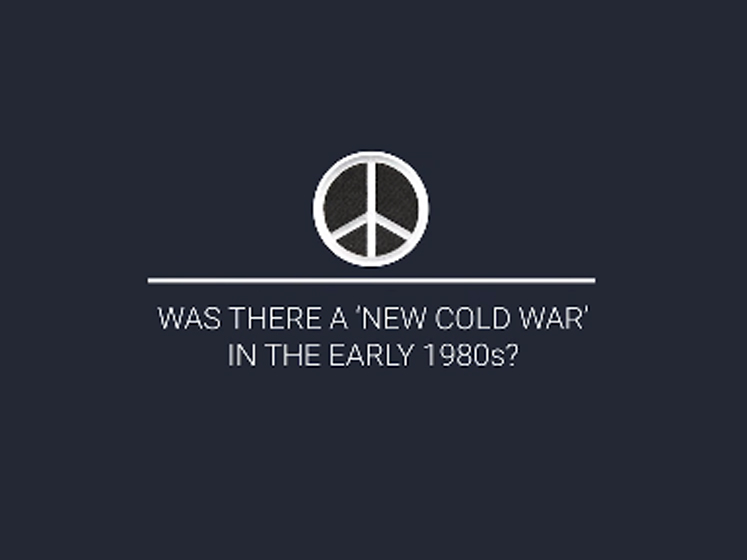The 1970s were marked by a period of détente, or an easing of tensions, between the West and the Soviet bloc. By the late 1970s, however, détente was increasingly strained. The Soviets embarked on a number of foreign interventions, most notoriously by invading Afghanistan in December 1979, which were condemned by the West. From the American perspective in particular, détente had also allowed the Soviets to increase their relative military strength vis-à-vis the United States, thereby weakening American power. Particularly destabilising was the Soviet decision to deploy new intermediate-range nuclear forces, missiles known as SS-20s, in Eastern Europe. For NATO, this gave the Soviets a worrying advantage and upset the strategic balance of nuclear weapons across Europe. In December 1979, NATO aimed to restore this balance by adopting its ‘Dual-Track Decision’: one the one hand, arms control negotiations would be pursued to try to secure the removal of the SS-20s; on the other hand, unless the SS-20s were removed, NATO would prepare to deploy its own, modernised nuclear weapons in Western Europe beginning in the autumn of 1983. Specifically, Cruise and Pershing II missiles would be stationed in the UK, West Germany, Italy, the Netherlands, and Belgium. These developments led to heightened tensions between East and West and rhetoric on both sides became more aggressive, particularly following the election of American President Ronald Reagan in November 1980. This return to East-West tensions and the renewed prospect of nuclear war led this period to be referred to as a ‘Second Cold War’, comparable to the era that witnessed the 1962 Cuban Missile Crisis.
These growing tensions and the looming deployment of new nuclear weapons in Western Europe was met with alarm by millions of citizens. In the UK, the government’s decision to station Cruise missiles at two military bases – Greenham Common and Molesworth – was accompanied by the separate decision to modernise the British nuclear deterrent by replacing the ageing Polaris with the new Trident system. These decisions, against the backdrop of what British Foreign Secretary Lord Carrington called the ‘megaphone diplomacy’ between the superpowers, raised fears that an unimaginably destructive nuclear war was increasingly possible.
It was in this context that unprecedented numbers of citizens from countries across Western Europe, and indeed around the world, engaged in different forms of activism to express their anxieties and demand a change of course from their governments.
 Was there a ‘New Cold War’ in the early 1980s?
Was there a ‘New Cold War’ in the early 1980s?
Was there a ‘New Cold War’ in the early 1980s?
Was there a ‘New Cold War’ in the early 1980s?
This online resource is a collaboration between LSE IDEAS and The Open University. It has received generous support from the LSE Knowledge Exchange and Impact Fund and invaluable cooperation with LSE Library.
Please complete this short survey to let us know what you think of this online resource.
